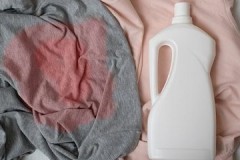Important rules for how to wash woolen items so as not to spoil them
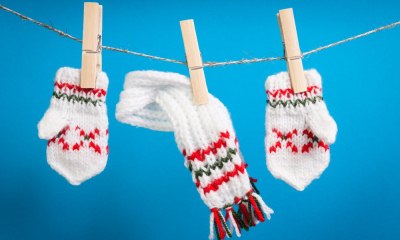 Woolen things are in the wardrobe of almost every person. They warm well in the cold season, are pleasant due to their natural composition, and are practical.
Woolen things are in the wardrobe of almost every person. They warm well in the cold season, are pleasant due to their natural composition, and are practical.
Wool items require regular maintenance, including washing. How to carry it out so that the thing does not deteriorate and does not lose its appearance?
Let us analyze in more detail whether it is possible and how to properly wash woolen things in a washing machine and by hand, at what temperature and in what mode, how to dry products from merino, camel, dog hair after washing.
Content
Is it possible?
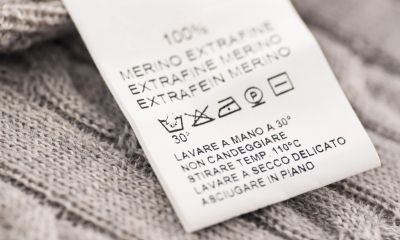 The peculiarities of the care of the woolen product, in particular the washing permit, must be indicated on the label for the product.
The peculiarities of the care of the woolen product, in particular the washing permit, must be indicated on the label for the product.
For some items only dry cleaning is allowed, for others only hand wash... And only a small number of woolen sweater and sweaters can be processed in a typewriter.
Such restrictions are associated with the peculiarity of the yarn from which warm things are knitted. Wool is sensitive to wet processing and mechanical stress - it can easily stretch or shrink.
To preserve the item, you need to adhere to the manufacturer's recommendations and follow the rules of hair care.
Processing in a washing machine: at what temperature, mode?
Automatic washing requires compliance with certain factors that relate to:
- processing conditions;
- selection of detergents.
Washing organization process:
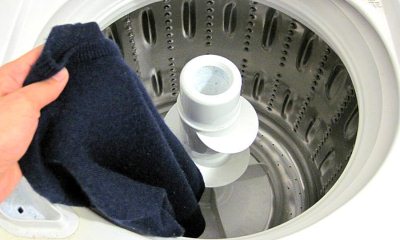 Turn the garment inside out and place it in a laundry bag.
Turn the garment inside out and place it in a laundry bag.- Put the thing in the drum of the machine.
- Pour a portion of the washing gel into a special container.
- Select the mode "wool" or "delicate".
- Set the water heating temperature recommended by the manufacturer or + 30 ° С if there is no label.
- Disable drying and spinning. If there are no prohibitions on the label, you can set the minimum spin - 400-500 rpm.
- After the end of washing, it is advisable to wring out the product a little.To do this, it is placed in a terry towel and squeezed without effort.
The porous structure of wool tends to be poorly rinsed out of the detergent, therefore, its choice must be taken seriously. Powdered preparations not only dissolve worse in water, but are also worse washed out of fibers.
How to wash by hand, at how many degrees?
Most often, hand washing is used to care for woolen clothes. With this treatment, the thing is washed delicately, without intense mechanical stress.
Procedure:
- Prepare a woolen thing. If it has pockets, they need to be emptied.
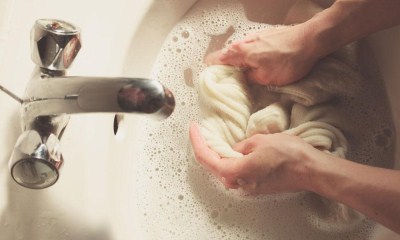 Turn the product to the wrong side.
Turn the product to the wrong side.- Dissolve detergent in warm water (+ 30 ° C) in a large basin.
- Wet the product by completely dipping it in water.
- Wash by gently squeezing and turning the garment, paying attention to the most stained areas. You can't rub a thing.
- After washing, the water is drained, and cleaned for rinsing.
- Rinse things out several times, replacing the water.
- Squeeze the woolen thing through a terry towel.
Coat type: what does it affect?
There are several types of wool. Each of them has its own characteristics. Knowing what kind of wool was used to create the thing, you can select the optimal care for the product.
Mohair, angora and llama hair should not be soaked or rubbed hard.... Contamination from such materials is washed off with refined gasoline. Excess - blot with a cloth, and the thing itself is washed in slightly cool water.
Sheep
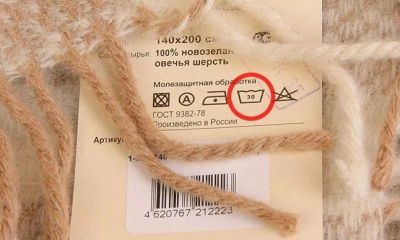 This material is the most common and unpretentious in processing. It should be washed with water with a temperature of up to + 35 ° C, without sharp cooling.
This material is the most common and unpretentious in processing. It should be washed with water with a temperature of up to + 35 ° C, without sharp cooling.
Both soap shavings and gels can be used as a detergent... Do not use powders.
If soaking is required, then it should not be longer than 10 minutes. Twisting is prohibited. Rinse the item very thoroughly.
Camel
Things knitted from camel wool are light and soft. Washing is similar in many ways to lambswool, with some differences:
- water heating temperature - up to + 30 ° С;
- it is advisable to use less detergent than usual;
- soaking is not long.
Cashmere
This type of wool is distinguished by its delicacy and low wear resistance. The processing of such products requires great care:
- Hand wash at + 30 ° C.
- A small amount of detergent is taken.
- Any effort towards the product is prohibited (friction, crushing, etc.).
Read about washing a cashmere coat here.
How to wash cashmere, the video will tell:
Mohair
Lightweight and durable mohair thread is used both independently and in blended fabrics and yarns. In this case, both synthetics and wool can serve as an addition. Washing method is similar to cashmere.
Vigogne
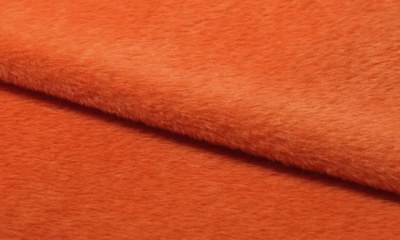 The coat of this type is thin and very delicate. This is a subspecies of camel hair, but requires more careful handling:
The coat of this type is thin and very delicate. This is a subspecies of camel hair, but requires more careful handling:
- drying only in a horizontal position, since the material is easily pulled;
- ironing is possible;
- use of special washing gels;
- do not squeeze hard;
- water heating - up to + 40ºС.
Some Vigoni items have a ban on washing - they should be taken to dry cleaning.
Alpaca
This type of wool is one of the most popular. Due to its fineness, manual processing is recommended, in water with a temperature of no more than + 30 ° C.
It is advisable to use a special detergent marked "for wool".
Angora
Angora is a delicate material, which in most cases the manufacturer prohibits washing. For such things, only dry cleaning may be acceptable.
If there is no washing prohibition on the tag, the treatment should be as delicate as possible:
- Manually.
- Not more than at + 30 ° C.
- Virtually no detergent.
Doggy
The dog's coat has medicinal qualities and retains heat well. You can wash such products with soaking. Processing in a washing machine is allowed, but without spinning and in non-hot water.
Wool needs very careful processing, which is recommended taking into account the type of wool.
What does improper care lead to?
The difficulty in caring for woolen items is due to several factors. Among them:
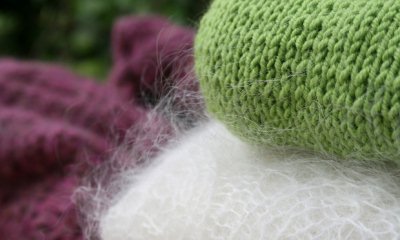 sensitivity of the yarn to high temperatures and its drops;
sensitivity of the yarn to high temperatures and its drops;- the texture of the material (looseness, peculiarity of the weaving of threads, etc.);
- the tendency of wool to deform when wet;
- the ability of the material to absorb a lot of water and give it away poorly;
- poor rinsing of wool after soaping;
- significant weight gain due to wetting.
Any violation of the technology of washing, drying and storing things can lead to rapid damage to the product. But with proper care, the thing will be worn for years, warming and pleasing in appearance.
Product village: is it possible to fix it?
This effect can lead to:
- Hot wash.
- Abrupt change of hot water to cold.
- Use of an unsuitable detergent.
- Wash with coarse items, etc.
There are several tricks that you can use to try to return things to their normal form. One is to wet without detergent and try to stretch a little by laying on a horizontal surface.
Read how to stretch a shrunken woolen sweater here, on the return of the original shape of the woolen sweater - here.
Stretched out
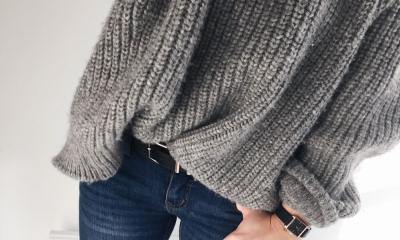 Hair stretching leads to:
Hair stretching leads to:
- storage of loose-knit things on hangers;
- twisting after washing;
- long soaking;
- spinning at high speeds;
- vertical drying, etc.
If a sweater, pullover or jacket is stretched very much, it will not be possible to completely restore their original size.
To try to reduce the length and width, simple tricks will help:
- giving the thing the desired shape after getting wet, spreading it out on a horizontal plane;
- shock methods (for example, washing at a high temperature of + 50 ° C), etc.
More details about the whole range of possibilities can be found here.
Frequent or infrequent wash: which to choose?
Frequent washing is undesirable for wool... If the item is not stained, it can be dry cleaned to maintain its shape and texture. This can be done with a soft clothes brush.
The frequency of washing things directly depends on the intensity of wear. When worn rarely, such a thing can do without washing for several months. But if the product is sweaty or heavily stained, you cannot do without high-quality washing.
Even delicate washing contributes to material wear, loss of softness and deterioration of shape.
How to dry properly?
Natural wool becomes heavy and pliable after washing. Improper drying can significantly damage the shape of the item and impair the texture of the item.
Procedure:
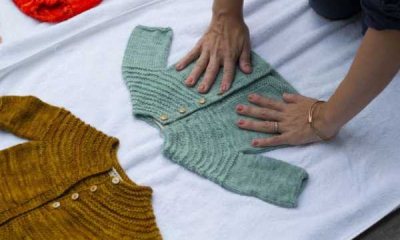 After washing, the wool item must be gently wrung out by wrapping it in a large terry towel.
After washing, the wool item must be gently wrung out by wrapping it in a large terry towel.- Prepare a place for drying - spread the second terry towel on a horizontal plane.
- Carefully place the wrung out item on the prepared place. In this case, it is important to immediately straighten all folds and creases.
- Leave the item to dry with good ventilation.
- Turn the garment over during the drying process to ensure even drying. As the towel gets wet, on which the woolen thing is laid out, it is replaced with a dry one.
To shift woolen clothing until it is dry, you need to be extremely careful, first rolling it into a roll, and then unrolling it again. This should be done to avoid deformation.
The best drying option is in natural conditions on a horizontal plane... If possible, it is better to use not a table, but a special dryer with a mesh base. Using such a device, the thing is provided with air access from both above and below. This gives faster and better drying.
Recommendations
Washing wool products will go smoothly if you apply the following tips in practice:
- In the process of washing and rinsing, a sharp change in the temperature of the water must not be allowed, since a woolen thing can respond to it with deformation.
- Conditioner can be used when washing wool. It will make the thing softer and contribute to fluffing the threads, and giving the thing softness.
 During the drying process, you should pay attention so that the thing does not stretch. If necessary, it should be lightly gathered with the palms of the hands, restoring its shape.
During the drying process, you should pay attention so that the thing does not stretch. If necessary, it should be lightly gathered with the palms of the hands, restoring its shape.- Most woolen knitted items are not ironed, as this operation can ruin the texture of the material. For some types of products, ironing is strictly prohibited. There should be information about this on the label.
- Any vigorous physical impact on the coat is prohibited.
- White woolen clothes are washed separately from the rest, even if the clothes do not fade. This is due to the fact that during joint processing, colored villi can adhere to a white product, which will be difficult and time-consuming to remove, and without this, the appearance will be spoiled.
- Proper storage is one of the components of caring for things. Woolen clothing should be kept neatly folded. In this case, you need to take care of special moth products. During long-term storage, things must be periodically taken out, ventilated and shifted.
- It is impossible to lather the product itself or pour washing gel on it. The preliminary dilution of all preparations in water is mandatory.
Conclusion
Wool items should be washed in accordance with all the requirements for the care of the material and the manufacturer's instructions.
Increasing the soaking time, water temperature or amount of detergent is not advisable, as it is capable of doing harm, and lead to damage to things.

